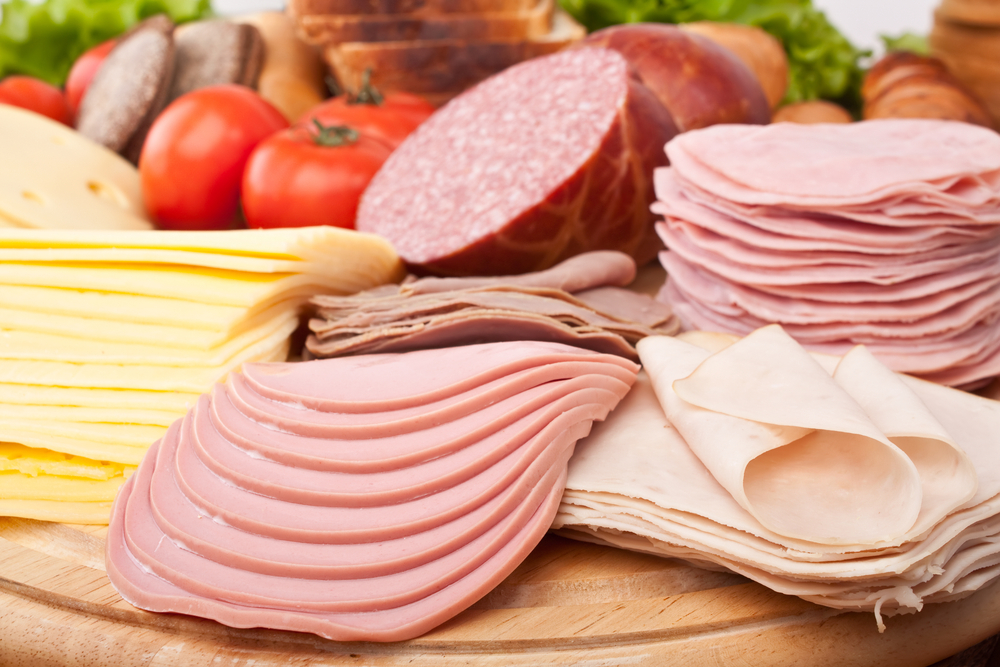The Truth About Nitrite in Lunch Meat

The preservative sodium nitrite fights harmful bacteria in ham, salami and other processed and cured meats and also lends them their pink coloration. However, under certain conditions in the human body, nitrite can damage cells and also morph into molecules that cause cancer.
Still, if you wanted to avoid this preservative, you would have to cut out more than just ham to go cold turkey on nitrite. In a typical person's diet, 80 percent of nitrite comes from vegetables such as spinach, radishes and lettuce, and another 13 percent comes from swallowed saliva.
How is it possible for a substance that seems unhealthy to be so abundant in the body, and in healthy foods?
There are two answers. First, nitrite can be poisonous, but only in huge quantities. And second, a host of factors, including the food and bacteria in your gut, determines whether nitrite in moderate amounts becomes a chemical friend or foe.
Nitrite in the body
In massive doses, nitrite – and nitrate, which changes to nitrite in the body – can lead to a condition called methemoglobinemia. Most common in infants, this condition occurs when nitrite in the blood deactivates hemoglobin, which allows red blood cells to carry oxygen. Nitrate contamination of drinking water, which can occur when nitrate fertilizer makes its way into a well, is a frequent cause.
In theory, moderate amounts of nitrite can also cause health problems. If all goes well in the body, nitrite in the diet transforms in the gut into nitric oxide, which serves a variety of important functions in the body (and should not to be confused with "laughing gas," nitrous oxide).
Get the world’s most fascinating discoveries delivered straight to your inbox.
But under certain conditions, nitrite can instead form nitrosamines, molecules that cause cancer in lab animals. In an effort to minimize nitrosamine formation, while still preventing food-borne illnesses like botulism, the U.S. Department of Agriculture enforces a limit of 200 parts of sodium nitrite preservatives per million parts of meat, by weight.
New research has suggested that that level of regulation may be unnecessary, however. Nitrite preservatives have "been found to be safe," said Nathan Bryan, a professor of integrated biology and pharmacology at the University of Texas Medical School at Houston, who says he receives no funding from the meat industry. "It's a complete change in paradigm," from what people thought in the 1970s and 1980s, he said. "There's no difference whatsoever in the nitrite that you get from cured and processed meats versus what you get from vegetables. It's the same molecule."
However, the food that accompanies nitrate and nitrite into the gut helps determine how the molecules act once they get there. Meat manufacturers now add the antioxidant ascorbic acid, or vitamin C, to their products, which promotes the formation of relatively harmless nitric oxide and counteracts the development of the possibly cancer-causing nitrosamines.
So is lunch meat bad for you?
If all nitrites were to form nitric oxide in the body, Bryan said, "there's no concern whatsoever." People who use proton pump inhibitors, a common class of acid suppressants, may be an exception, he added, because the diminished acidity in their stomachs may allow for the growth of bacteria that produce nitrosamines.
Despite the growing indications that nitrite is safe for most people, don't pull out the celebratory pepperoni just yet.
"Multiple [epidemiological] studies have found a relationship between processed meat intake and increased risk of colorectal cancer," said Amanda Cross, an investigator in the division of cancer epidemiology and genetics at the National Institute of Health. One possible explanation: "In addition to nitrate and nitrite, it is possible that there are other components of processed meats that are responsible for the associations observed with colorectal cancer."
Bacon is one food that Bryan agrees is a potential health risk. Bacon is especially high in nitrite and can form nitrosamines when fried at high temperatures. To avoid this hazard, Bryan recommends cooking bacon slowly and at a low temperature.
Pass it on: Evidence is mounting that nitrite preservatives are safe, but that doesn't mean processed meats are healthy.
Food Facts explores the weird world of the chemicals and nutrients found in our food, and appears on MyHealthNewsDaily on Fridays. Follow MyHealthNewsDaily on Twitter @MyHealth_MHND.

